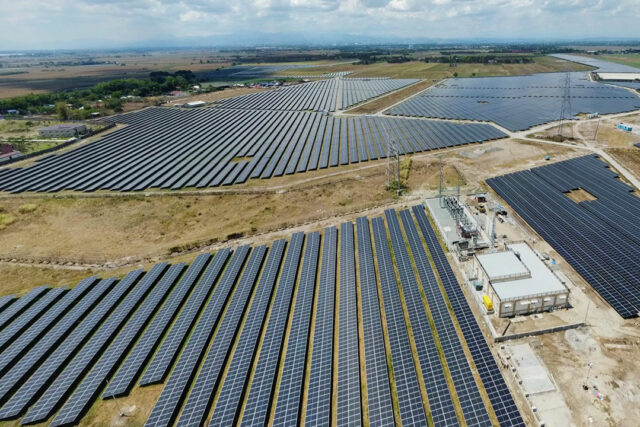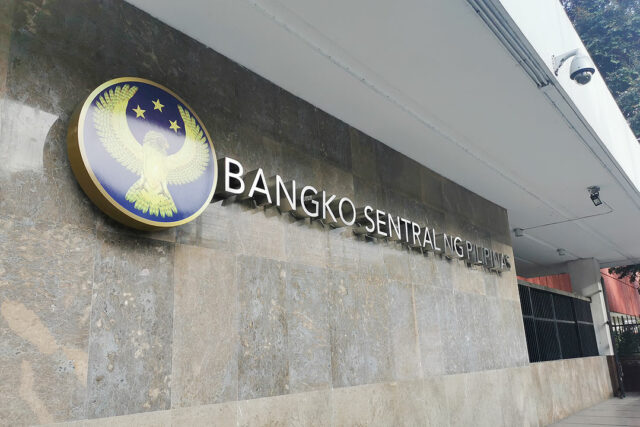By Kenneth Christiane L. Basilio, Reporter
THE PHILIPPINES is ready to finalize the selection of advanced fighter jets for as part of its military modernization, though funding shortfalls continue to be the biggest stumbling block to buying the combat planes.
Finance Secretary Ralph G. Recto had agreed to the Department of Defense’s (DND) proposal for a creative financing program to fund the jets, but officials were still looking for a long-term funding stream, Defense Secretary Gilberto C. Teodoro, Jr. told reporters on Monday.
“If it was up to me, I’m ready to make a decision,” he said in Filipino on the sidelines of a security agreement signing with Lithuania at a hotel in the Philippine capital. “But the source of funding, that’s what we’re discussing right now.”
The Philippines has been scouting for coveted multi-role combat jets as part of efforts to boost its inventory of air force planes, which mainly consist of turboprops, amid rising tensions with China in the South China Sea.
Mr. Teodoro said the government plans to finance the fighter jets through a loan, opting not to tap into the national budget for the purchase.
“This will be paid by the government annually,” he said. The government is allotting as much as P400 billion for the purchase of 40 multi-role fighters, he told lawmakers last year.
“The government needs to allocate a consistent source of repayment,” he said, adding that special purpose funds or revenue from exploration activities might be tapped to sustain the financing.
The Philippines is also considering the costs of essential weapon systems, spare parts and maintenance for the fighter jet acquisition alongside radar and air refueling planes, he said.
“We may have to adjust the approved budget for the contract, as costs tend to rise over time,” Mr. Teodoro said.
The Southeast Asian nation is still exploring ways to fund its desired multi-role fighters, with Philippine Ambassador to the US Jose Manuel G. Romualdez saying in late May that the government was working with Washington to finance a $5.6-billion (P315 billion) contract for 20 F-16 jets.
The Finance department is also looking to tap into Sweden’s export credit system to help shore up its defense industry. Stockholm-based defense company Saab AB makes JAS 39 Gripen advanced jets.
Philippine Air Force Commander Lieutenant General Arthur M. Cordura last week said they want combat fighters with “asymmetric” capabilities that could carry heavy weapon payloads and could take off from short runways.
The Swedish-built multi-role fighter can carry payloads of up to 16,500 kilos and take off from roads 16 meters wide and 500 meters long, according to a report published on Saab AB’s website.
The Philippines has launched a $35-billion military modernization program to bolster its defense capabilities in the next decade, including the acquisition of advanced naval ships, planes and missile systems, as it pushes back against Chinese military might in the region.
China claims nearly all of the South China Sea via a U-shaped, 1940s nine-dash line map that overlaps with the exclusive waters of the Philippines, resulting in clashes at disputed reefs and atolls.
A United Nations-backed tribunal in 2016 voided China’s sweeping claims for being illegal, a ruling that Beijing does not recognize.
Meanwhile, the Philippine and US armies on Monday conducted a live-fire exercise of an advanced vehicle-mounted rocket system in central Luzon as part of a joint military exercise between the two long-time allies.
Philippine and US troops fired two units of the High Mobility Artillery Rocket Systems (HIMARS), which the Philippine Army in a statement said could hit targets with “precision and power” and be highly mobile while on the battlefield.
The rocket system was last fired in April as part of Balikatan (shoulder-to-shoulder) exercises, the annual bilateral war games between the two allies that have grown in scale and increasingly featured advanced weaponry.
Manila and Washington seek to strengthen security cooperation and enhance force interoperability in response to China’s growing assertiveness in the region.












